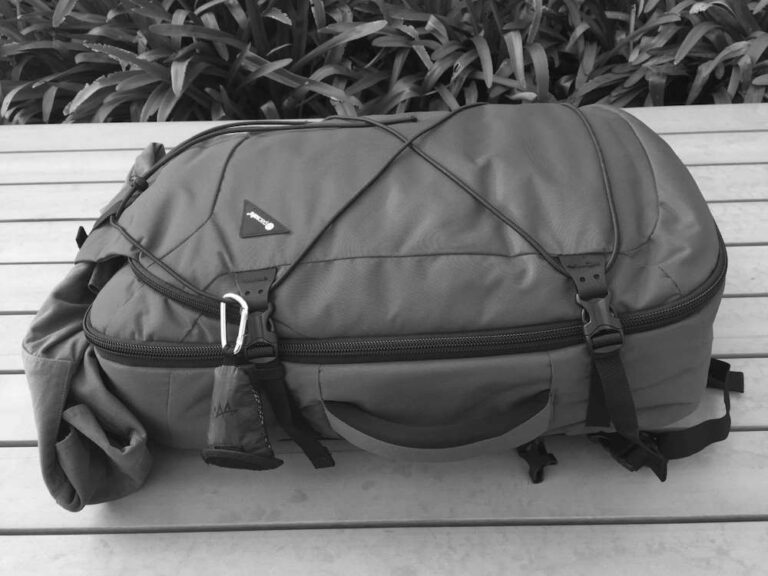Decoding the 5 Reasons Backpacks Hurt My Back
In a world where backpacks have become an essential part of our daily lives, it’s no surprise that many individuals experience back pain as a result. They always say that backpacks hurt my back. The constant weight and strain placed on our backs can lead to discomfort and even chronic issues. This article aims to explore the reasons why backpacks hurt our backs and provide practical solutions to alleviate the agony.
Understanding the Backache Battle
The Weight Dilemma
Carrying a heavy load on our backs for prolonged periods can take a toll on our bodies. The weight distribution becomes a critical factor in determining the strain placed on our backs. As backpacks become increasingly popular, the weight we carry is also increasing, exacerbating the problem.
Poor Ergonomics
The design and ergonomics of a backpack play a vital role in preventing back pain. Ill-fitting straps, lack of lumbar support, and inadequate padding can all contribute to discomfort and pain. Additionally, incorrect positioning of the backpack’s weight can throw off the body’s natural alignment, leading to muscle imbalances and strain.
Posture Predicament
Our posture while wearing a backpack can significantly impact the stress on our backs. Hunching or slouching forward while carrying a heavy load can increase the strain on the spine, resulting in discomfort and potential long-term damage.
The Battle Plan: Effective Strategies to Combat Backache
To alleviate the agony caused by backpacks hurting our backs, it is essential to adopt a proactive approach. Here are some practical strategies to combat the backache battle:
1. Optimal Backpack Selection
Choose a backpack that suits your body type and needs. Look for features such as adjustable straps, padded back panels, and waist belts for proper weight distribution. Investing in a backpack with ergonomic design principles can make a world of difference.
2. Lighten the Load
Regularly assess the items you carry in your backpack and eliminate unnecessary weight. Prioritize essential items and distribute the weight evenly throughout the bag. Remember, a lighter backpack means less strain on your back.
3. Proper Weight Distribution
Distribute the weight in your backpack evenly. Place heavier items closer to your back, minimizing the strain on your shoulders and spine. Avoid overloading one side of the backpack, as it can lead to muscle imbalances and discomfort.
4. Adjust the Straps
Ensure that the backpack’s straps are adjusted correctly. Tighten them enough to prevent the bag from sagging, but not so tight that they restrict your movement or cause discomfort. Adjust the sternum strap to stabilize the load and distribute weight more evenly.
5. Mind Your Posture
Maintain an upright posture while wearing a backpack. Keep your shoulders back and down, engaging your core muscles to support your back. Avoid hunching forward or slouching, as it can lead to strain and pain.
6. Take Frequent Breaks
If you’re carrying a heavy backpack for an extended period, give your back regular breaks. Find opportunities to remove the bag and stretch your muscles. This can help alleviate the strain and prevent discomfort.
7. Strengthen Your Back
Regular exercise focused on strengthening your back and core muscles can help combat the effects of carrying a backpack. Exercises such as planks, rows, and back extensions can improve your posture and reduce the likelihood of pain.
8. Consider Alternative Carrying Methods
In certain situations, alternative carrying methods may be worth exploring. Wheeled backpacks, messenger bags, or briefcases with shoulder straps can distribute weight differently and reduce strain on your back.
Pros and Cons of Different Backpack Features
To better understand the options available, here’s a table highlighting the pros and cons of different backpack features:
| Feature | Pros | Cons |
|---|---|---|
| Adjustable Straps | Provides a customizable fit for better weight distribution | Improper adjustment can cause discomfort or restricted movement |
| Padded Back Panel | Offers additional support and cushioning | May add extra weight or reduce breathability |
| Waist Belt | Helps distribute weight to hips and relieve shoulder strain | May be uncomfortable for some individuals |
| Multiple Compartments | Allows for organized packing and weight distribution | Can lead to over-packing and increased weight |
Frequently Asked Questions
Q: Are backpacks the only cause of back pain?
A: No, backpacks are not the sole cause of back pain. Other factors such as poor posture, lack of exercise, and underlying medical conditions can also contribute to backache.
Q: How can I determine if my backpack fits properly?
A: A properly fitting backpack should rest snugly against your back, with the bottom positioned at your hips. The straps should be adjusted so that the bag sits comfortably without sagging or pulling excessively on your shoulders.
Q: Can using a backpack with wheels alleviate back pain?
A: Yes, wheeled backpacks can be a suitable alternative for individuals with back pain. By rolling the bag instead of carrying it, the strain on the back is significantly reduced.
Q: Is it necessary to consult a healthcare professional for back pain caused by backpacks?
A: If you experience persistent or severe back pain, it is advisable to consult a healthcare professional. They can provide a proper diagnosis, offer personalized advice, and recommend appropriate treatment options.
Final Thoughts
Backpacks have become an integral part of our lives, but their improper use can lead to back pain and discomfort. By understanding the causes of backache and adopting effective strategies, we can combat the agony and conquer the backache battle. Remember to choose an ergonomic backpack, lighten the load, maintain good posture, and take regular breaks to ensure a healthy and pain-free back.








